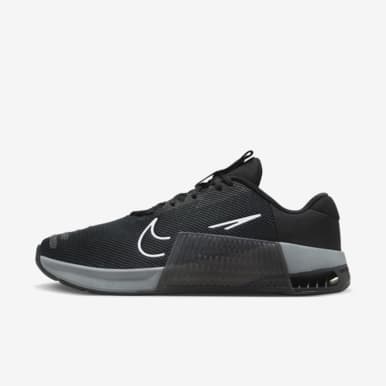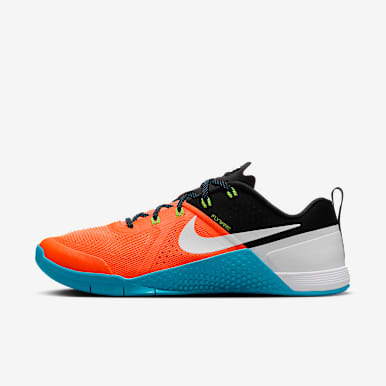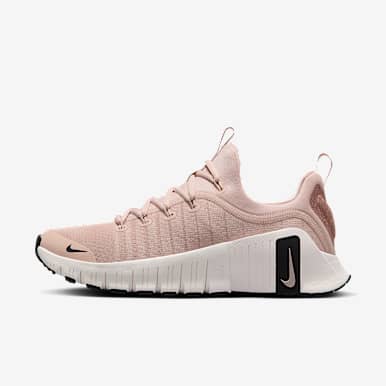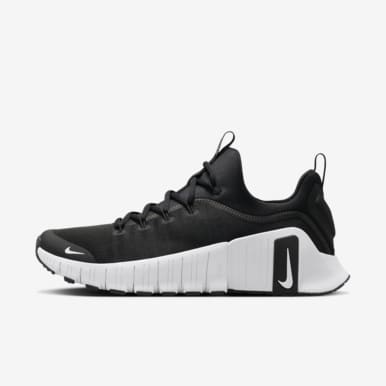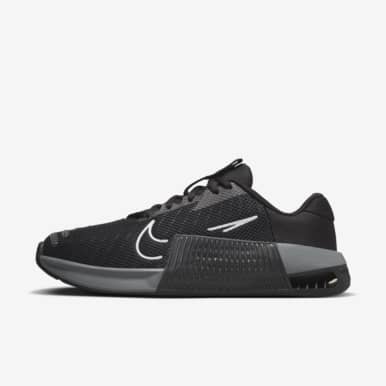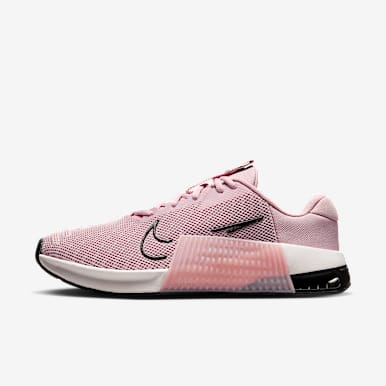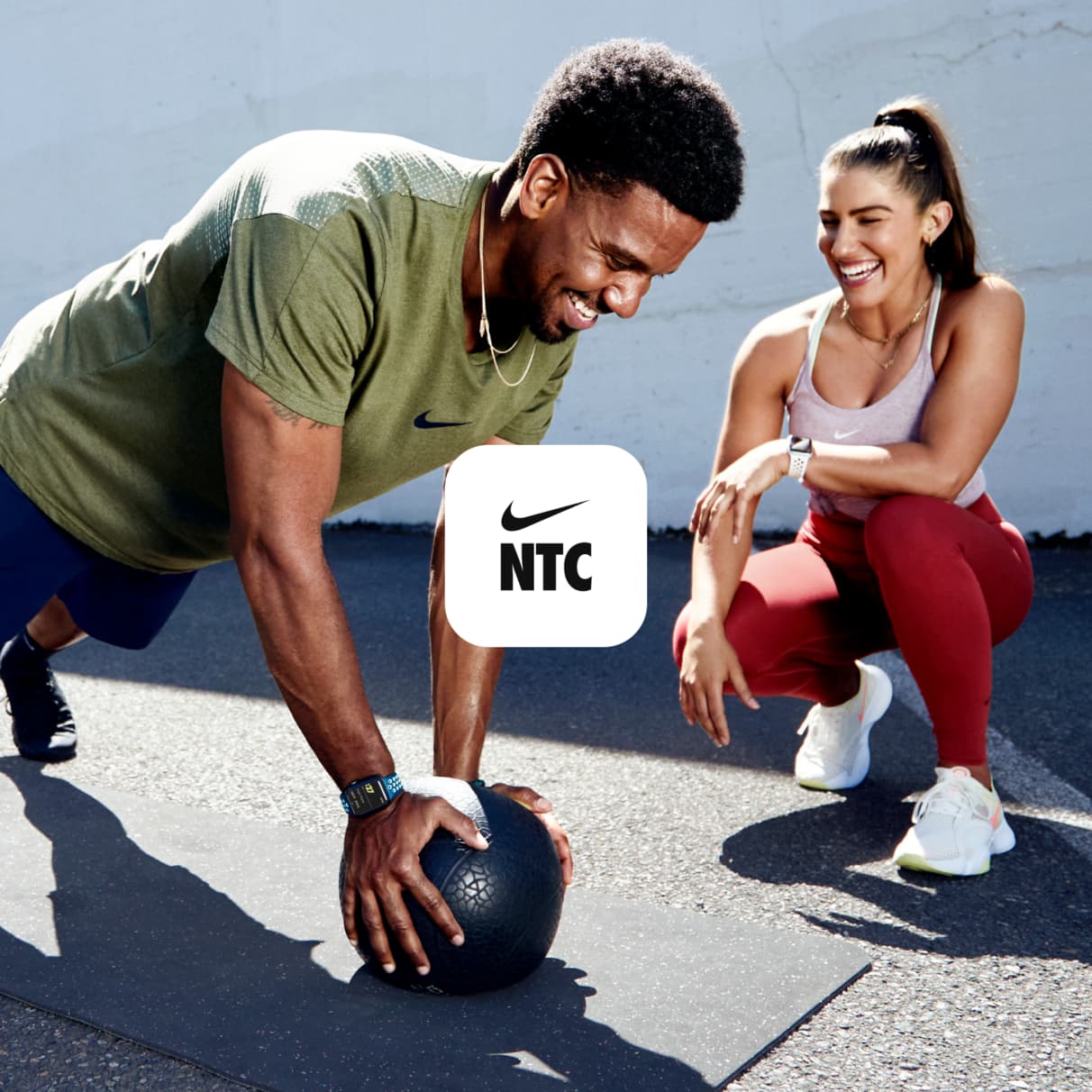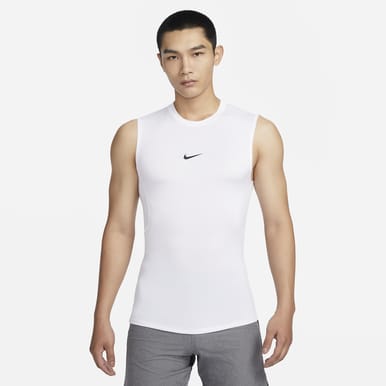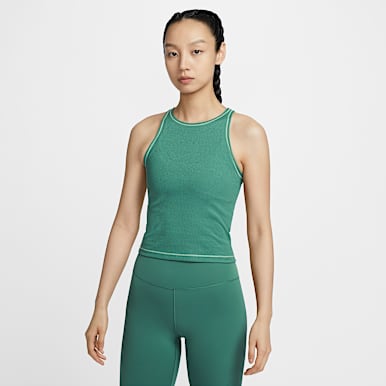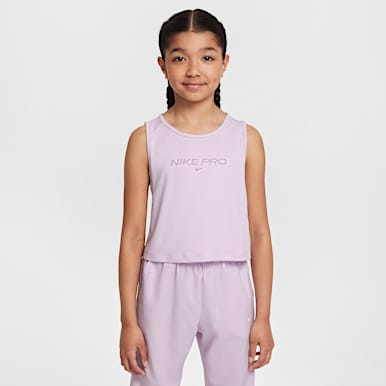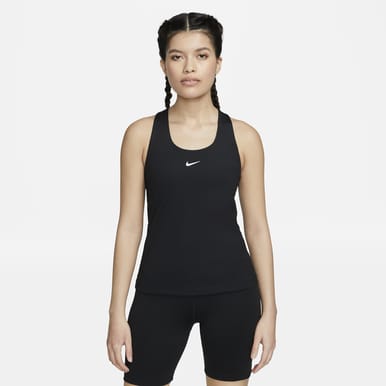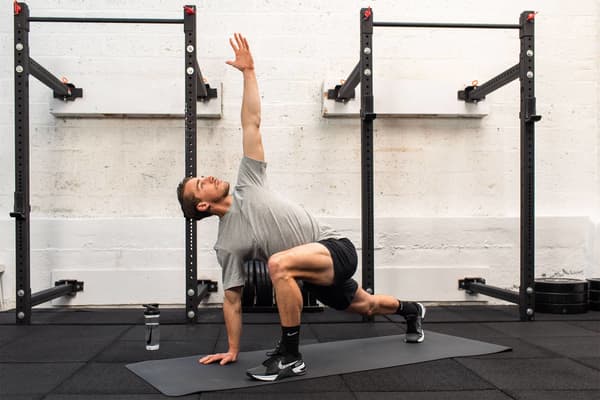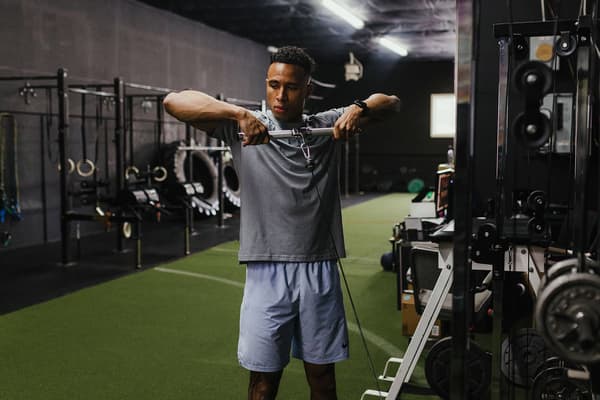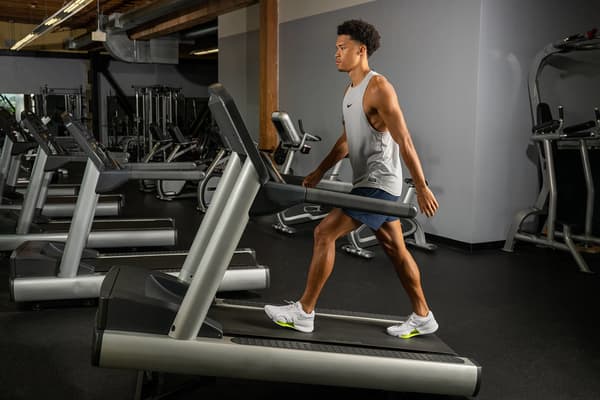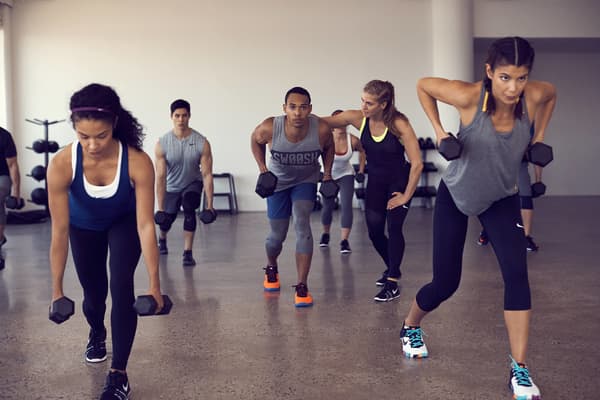The Benefits of Deadlifts, According to Experts
Sport & Activity
Build strength and muscle mass in the posterior chain with this foundational, full-body exercise.

Walk through a gym and you'll probably see athletes pulling barbells—or dumbbells or kettlebells—towards their lower abdomen. Curious about the move? Meet the deadlift.
The exercise is an essential component to any strength routine, Megan Daley, a CrossFit Level 1 Trainer, said.
"Deadlifts are a foundational strength movement", Daley said. "They are also incredibly functional. I can't think of a reason why I wouldn't put some variation of a deadlift in a programme [for a client]."
When an exercise is characterised as "functional", it refers to the exercise's ability to enhance a multitude of other movements, including those that happen while working out (say, running) and those that occur in everyday life (like picking up a heavy box in the garage).
Daley said that the movement—which has several variations, including the Romanian deadlift, traditional barbell deadlift and sumo deadlift—is considered a posterior-chain exercise, meaning the move targets the muscles on the back of the body, like the hamstrings and glutes.
The American Council on Exercise noted that posterior-chain training is crucial to improve all-round strength, power, posture and flexibility. (The squat is another posterior-chain exercise.) When performing a deadlift with proper form, the body engages in a "chain-like" symphony of muscular contraction and relaxation, according to the ACE.
And because the movement calls on so many posterior chain muscles—and not just on the lower body—the move is especially powerful, Daley said. "The stronger your deadlift, the better equipped you'll be to do things throughout your day without hitting muscular fatigue", she said.
Read on to discover six potential benefits associated with deadlifting, according to fitness experts.
(Related: What Nike Shoes Are Best for Deadlifts?)
6 Potential Benefits of Deadlifting, Explained
1.You'll Target a Large Swath of Muscles
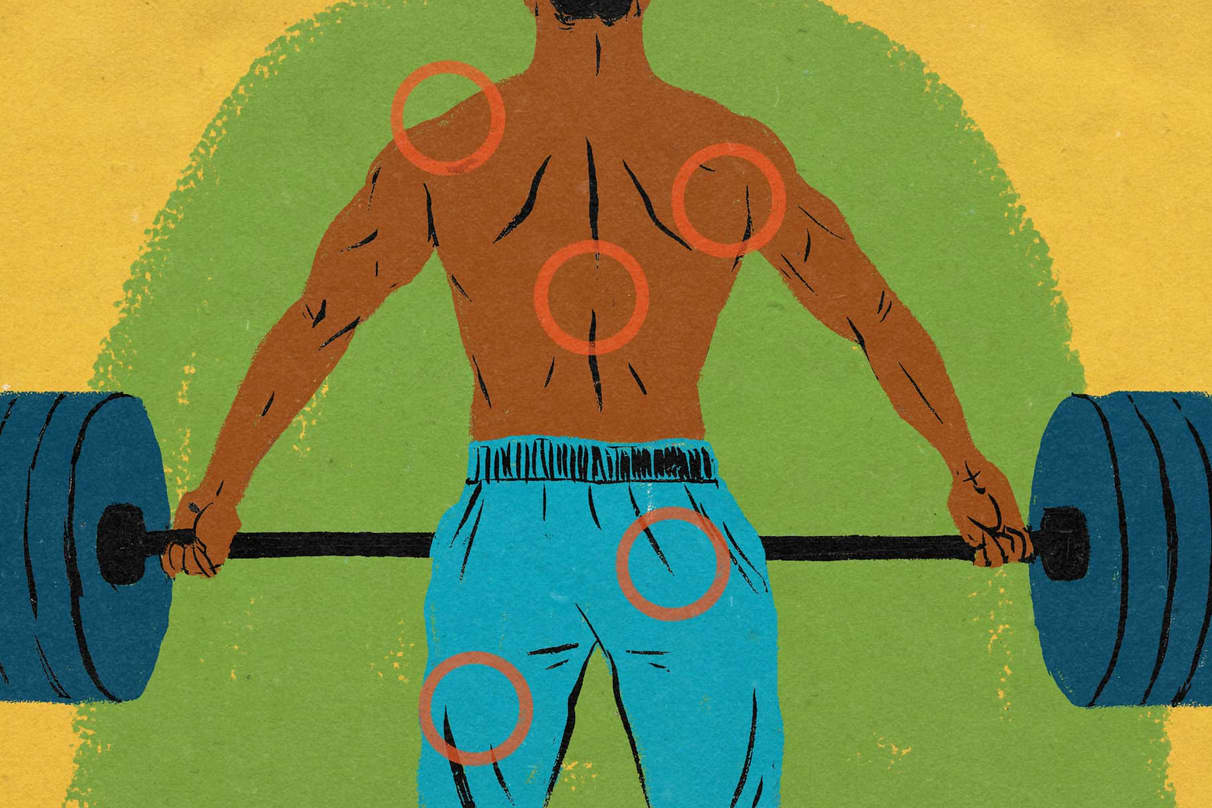
The leg muscles are primary movers in deadlifts, but the back, core and upper body are also utilised to stabilise the weight—making the move a particularly effective full-body exercise, according to exercise physiologist Jason Machowsky, CSCS, RD.
So, what muscles does the deadlift work? You'll activate muscles in your hips, glutes, lower body, core and back. Specifically, the muscle groups worked during a deadlift include:
- Glutes (gluteus maximus, gluteus minimus and gluteus medius): these help extend and stabilise your hips in all deadlift variations.
- Hamstrings: located on the back of your thighs, these muscles include the biceps femoris, semitendinosus and semimembranosus. These muscles are also hip extensors. They work with the glutes to move the hips forwards and come to a full standing position.
- Quadriceps: these are the four muscles on the front of the thigh that help extend the knees, especially during the initial lifting segment of the movement. The quads include the rectus femoris, vastus lateralis, vastus medialis and vastus intermedius.
- Trapezius: you'll find these muscles on the upper back and neck area. They help stabilise the shoulders as you lift the bar and stand upright in all deadlift variations.
- Latissimus dorsi: these are the wing-shaped muscles on your back that keep the mid-back strong and stabilised while lifting and lowering the bar.
- Erector spinae: this group of long muscles runs along the spine and helps you keep your back flat while deadlifting. When you're standing at the top of the move, your spinal erectors also help stabilise the torso and bolster your posture.
- Forearms and calves: these are worked to a lesser extent but are still activated during the lift to support the muscles listed above.
2.You Might Increase Your Power

If you're a basketball or volleyball player, or a footballer—or simply want to increase your jump performance—deadlifting can help, Machowsky said.
"Deadlifts are associated with better power production and jumping", he said. "They can improve vertical jump performance, which is a measure associated with power output".
A study in a 2015 issue of the Journal of Strength and Conditioning Research found that 10
weeks of deadlifting could help boost "rapid torque characteristics", or the ability to flex powerfully, of both the knee extensors and flexors. In part, this helped to increase the study participants' vertical jump height.
The movement is also a component to the power clean, an Olympic weightlifting move that relies on a person's capacity for velocity and power to propel the bar upwards.
3.Lower-Body Strength Is Likely to Improve

When a deadlift is properly executed, you'll feel a considerable burn in the muscles being worked, Machowsky said. That's because they spotlight the glutes and hamstrings, two of the largest muscles in the body. Machowsky noted that frequent training of the glutes and hamstrings will result in strength increases.
(Related: 7 Variations of Glute Bridges That Will Shake Up Your Next Workout)
As for how quickly improvements in strength come with training, that depends, Machowsky said.
"Initial strength gains that occur from lifting within the first few weeks usually have more to do with neurological adaptation—you get more efficient and can fire your muscles faster", he said. "Actual muscle mass and power gain typically takes at least six to eight weeks for significant changes".
And while gains in power and strength are most synonymous with deadlifts, stronger muscles overall can aid in endurance (in other words, you can move those large muscles faster and for longer without losing steam).
So, how often should you be incorporating this strengthening exercise into your workout routine? While it's best to consult with a certified personal trainer on developing a workout plan to improve lower-body strength, Machowsky noted that most of the studies on lower-body strength improvements had participants deadlifting between two and three times per week.
"Many traditional lifting programmes have people deadlift one to two times per week within a broader training programme with other leg exercises, such as squats and lunges", he said.
Again, it's important to speak to a certified personal trainer to develop the best type of training plan for your strength goals. That's because, depending on where you are in your fitness journey, you might benefit from a manipulation of certain exercise variables (sets, repetitions, weight) to progress.
4.You'll Ignite Your Back and Core (and Potentially Ward off Pain)

A super-heavy deadlift is a sure-fire way to feel like a champion, but for Daley that's just a small portion of the move's perks. She's a big fan of its orthopaedic benefits. "Deadlifts will improve your back and core strength", she said. "A stronger back means a more resilient back".
As noted earlier, the movement is a posterior-chain exercise, meaning it fires up the muscles on the back of the body. Studies have shown that frequent posterior-chain training is associated with reductions in back pain and can help improve overall posture.
A major component to that, Machowsky explained, is its ability to bolster core strength. "The effort required to stabilise the weight lifted during a deadlift leads to significant activation of the core musculature", he said. That's because your core is forced to engage in order to keep your torso steady as you move it (and the weight) upwards in a deadlift.
That said, deadlifts can be dangerous if performed improperly. To ensure you're executing the move correctly, work directly with a certified personal trainer.
5.It's Especially Helpful in Maintaining Bone Density

Bone mineral density refers to how strong your bones are. Naturally, the weaker your bone mineral density, the higher your risk for injury. For stronger bone density, the deadlift is particularly powerful, Machowsky said.
"Deadlifts may help maintain bone density due to what's called 'muscle-induced mechanical loading' of the bone", he said. "In other words, the muscles loaded during the deadlift 'pull' on the bones that they are moving, which stimulates bone development".
Technically speaking, any resistance-based exercise can improve bone mineral density. But Machowsky said that since deadlifts allow athletes to apply weight to many muscles simultaneously—and with heavier loads—it makes this benefit more prominent.
"[Deadlifts] use the full body to stabilise the weight by gripping the weight with the wrist and arm, stabilising the weight with the core and moving the weight with the legs", he said. "So you're driving bone health across the whole body".
6.Overall, Muscle Mass Is Likely to Increase (Which Could Stave off Sarcopenia)

Similarly, while resistance training generally helps to boost muscle mass, Machowsky noted that the ability to simultaneously place significant load on several muscles in a deadlift means that muscle is likely to build quickly (if you're training regularly and with intensity).
"The significant loading of muscles during a deadlift can encourage the body to maintain its lean muscle mass", Machowsky said.
He added that muscle maintenance is a key factor in the prevention of sarcopenia, or the decline of muscle tissue compounded by age. Studies have shown that multi-joint, compound exercises like deadlifts often apply a greater stimulus to muscles than isolated exercises and expedite hypertrophy (which is another term for the enlargement of skeletal muscle fibres or, simply put, muscle growth).
The Bottom Line
Rotating among a few deadlift variations, like the Romanian deadlift, sumo deadlift and traditional barbell deadlift, preferably under the supervision of an expert, can provide a boon of health benefits. Whether you perform the movement with dumbbells, a kettlebell or a barbell, all of them deserve a spot in your workout routine.
Words by Julia Sullivan, ACE-certified personal trainer

